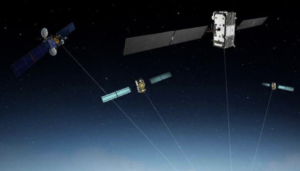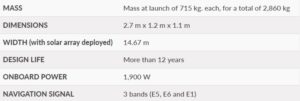Galileo Satellites GSAT0215, GSAT0216, GSAT0217, and GSAT0218, launched in December 2017, have been commissioned for operational use.
Since October 12, all Galileo satellites that were launched December last year are usable for service provision. NAGUs 2018023, 2018019, 2018020 and 2018018 announced the commissioning of Galileo satellites GSAT0215 (E21), GSAT0216 (E25), GSAT02017 (E27) and GSAT0218 (E31), increasing the number of satellites that are available for service provision to 18.
Galileo launch information
Galileo satellites Nicole (GSAT0215), Zofia (GSAT0216), Alexandre (GSAT0217) and Irina (GSAT0218), were launched on December 12, 2017 at 18:36 UTC, from the Guiana Space Centre (CSG) – Europe’s Spaceport in French Guiana — with a nominal duration of 3 hours, 55 minutes and 45 seconds from lift-off to separation of the satellites. For more details, read: Galileo launch 10. Completing the constellation.
The Arianespace Ariane 5 has placed the four Galileo satellites into MEO (Medium Earth Orbit) circular orbit, at an altitude of 22,922 km above sea level. The launcher carried a total payload of approximately 2,860 kg. Each of the four satellites presents the following features:
Since Galileo Initial Services were declared in December 2016 more than 100 million devices are using Galileo today. To keep track of Galileo-enabled devices serving a variety of needs as they become available, check out: usegalileo.eu.
The Galileo Initial Services allow the use of Galileo Open Service (OS), which enables a free of charge, global ranging, positioning and timing service for the OS users. Galileo is interoperable with the GNSS constellations (GPS, GLONASS, BeiDou). By offering dual frequencies as standard, Galileo is set to deliver real-time positioning accuracy down to the meter range.


